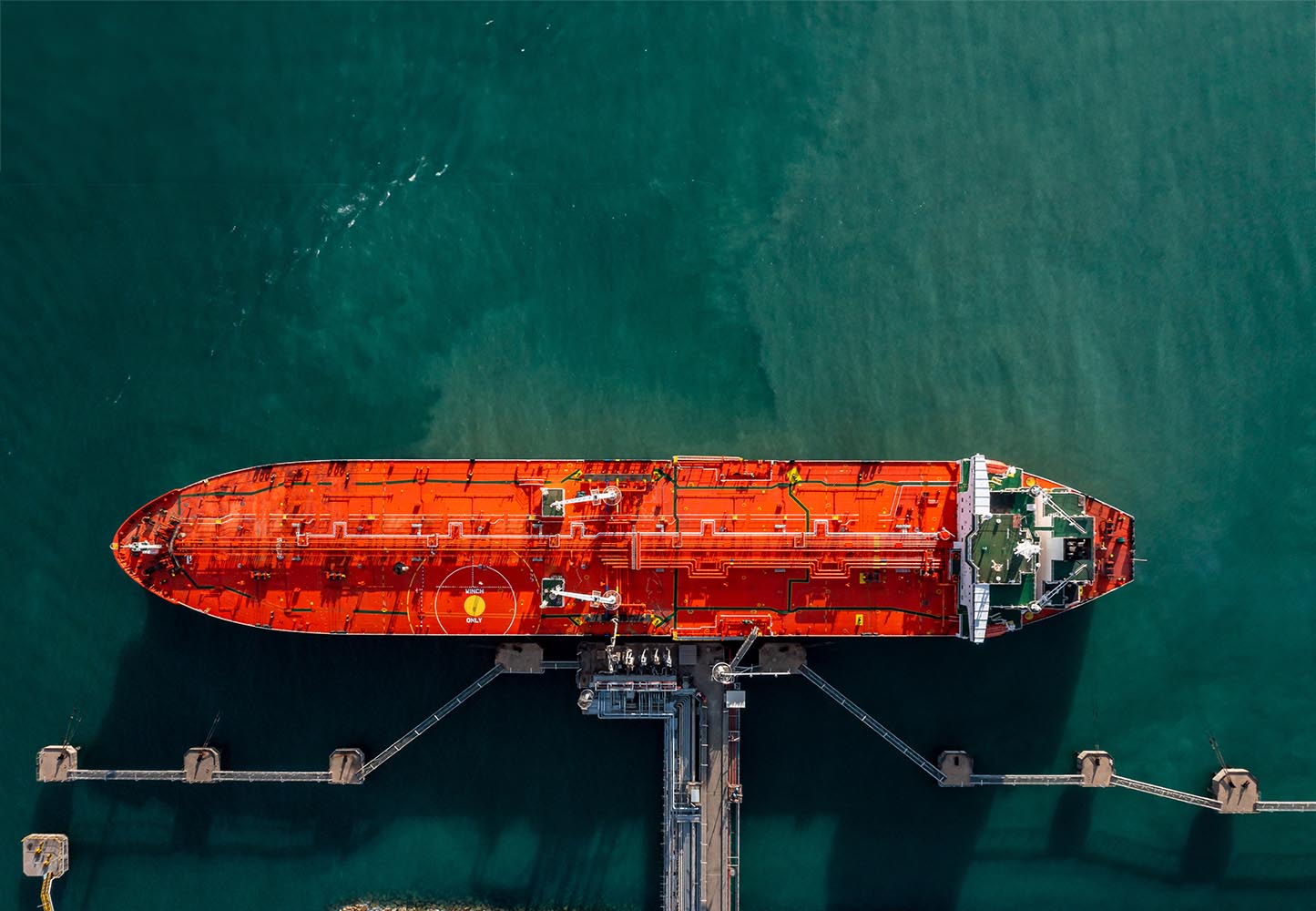
Exploring the stability and degradation of biofuels in maritime supply chains
The Global Centre for Maritime Decarbonisation (GCMD) recently released a comprehensive report detailing the behaviour of fatty acid methyl esters (FAME), a widely recognised biofuel, within maritime supply chains. This initiative aims to shed light on FAME’s stability and degradation, providing crucial insights for the shipping industry’s transition to greener fuels. With the global push towards sustainable energy sources, understanding the intricacies of biofuel performance is essential.
The report was co-authored by Dr. Prapisala Thepsithar, director of Projects, and Dr. Sanjay Kuttan, chief strategy officer, at GCMD. It was also reviewed by industry leaders, including Dr. Malcolm Cooper, CEO of VPS, Captain Rahul Choudhuri, president, Strategic Partnerships, VPS and Monique Vermeire, fuels technologist at Chevron.
Based in Singapore, GCMD was established to drive the adoption of decarbonisation solutions in the maritime industry, leveraging Singapore’s strategic position as a global maritime hub. An independent organisation, GCMD receives its funding from a combination of public and private sector sources. It conducts research, pilot projects, and provides guidance to help the maritime industry reduce its greenhouse gas (GHG) emissions and meet global climate goals. By providing data-driven insights, best practices, and innovative solutions, the GCMD plays a crucial role in supporting the maritime industry’s transition towards a more sustainable future.
Biofuels, particularly FAME, have garnered significant attention as immediate solutions for reducing greenhouse gas (GHG) emissions in compliance with stringent EU and IMO regulations. The maritime industry, which has traditionally relied on heavy fuel oils, is under increasing pressure to adopt cleaner alternatives. With global production reaching 40 million tonnes annually, FAME stands as the second most available biofuel after bioethanol. Its compatibility with existing marine infrastructure makes it a promising candidate for widespread adoption in maritime applications.
In recent years, the use of biofuel bunker blends has surged in Singapore, the second busiest port in the world after Shanghai, China, and Rotterdam, The Netherlands, the largest port in Europe. The consumption of FAME in these two major bunkering hubs has grown dramatically, from nearly zero in 2020 to a combined total of one million metric tonnes of FAME blends in 2023.
The adoption of biofuels is not just a regulatory necessity but also a strategic move for the shipping industry. The ability to use existing infrastructure without significant modifications offers a cost-effective pathway to reduce emissions. Furthermore, biofuels like FAME can be blended with conventional fuels, providing flexibility in fuel management and operational logistics.

Sources and production of FAME
Fatty acid methyl esters are produced through transesterification, a chemical process used to convert fats and oils into biodiesel and glycerin. This reaction involves exchanging the organic group of an ester with the organic group of an alcohol. The process is catalysed by either an acid or a base, with a base catalyst being more commonly used in biodiesel production.
The primary feedstocks for FAME production include:
Vegetable Oils: Common vegetable oils used for FAME production are soybean oil, palm oil, rapeseed (canola) oil, sunflower oil, and corn oil.
Animal Fats: Fats such as tallow, lard, and poultry fat are also utilised as feedstocks for FAME production.
Used Cooking Oils: Waste cooking oils and greases collected from restaurants and food processing facilities are increasingly used to produce FAME, contributing to waste reduction and sustainability.
Algae: Algal oils are a potential source of FAME, offering high yields and the advantage of not competing with food crops for agricultural land.
Other Renewable Sources: Various other renewable feedstocks, including non-edible oils from plants like jatropha and camelina, are also used to produce FAME.
Currently, soybean oil is the most prevalent feedstock for FAME production. In 2023, soybean oil accounted for approximately 55.4% of the total biodiesel feedstock used globally. This equates to around 7.3 billion pounds or 5.5% of soybean oil being used for FAME biodiesel production out of a total global production of 60.45 million metric tonnes.
In Asia, palm oil is the most common feedstock for FAME production, primarily due to the extensive palm oil plantations in countries like Indonesia and Malaysia, the world’s largest producers of palm oil. In 2023, approximately 30% of the global palm oil production, or 24.43 million metric tonnes, was used for biodiesel production, including FAME.
Biodiesel can be derived from various feedstocks and produced in different forms. The most common type is FAME, produced through the transesterification of fats and oils with methanol. Another form is FAEE (Fatty Acid Ethyl Esters), produced using ethanol instead of methanol. Additionally, there is HVO (Hydrotreated Vegetable Oil), which involves the hydrogenation of vegetable oils or fats, resulting in a product chemically similar to fossil diesel.
Understanding FAME degradation
Despite its potential, FAME presents unique challenges due to its chemical properties, which differ from conventional marine fuels. The primary concern is its susceptibility to degradation through autoxidation, hydrolytic oxidation, and microbial contamination. This degradation can lead to the formation of by-products such as peroxides, alcohols, and sludge, which may adversely affect engine performance and fuel systems.
The degradation process of FAME is influenced by several factors, including exposure to oxygen, water, impurities, light, and heat. Autoxidation occurs when FAME reacts with atmospheric oxygen, leading to the formation of peroxides and other unstable compounds. Hydrolytic oxidation, on the other hand, happens when FAME comes into contact with water, resulting in the breakdown of the ester bonds and the formation of free fatty acids. Microbial contamination is another significant concern, as certain bacteria and fungi can thrive in biofuels, producing biomass and acids that further degrade the fuel quality.
GCMD study
In an extensive pilot study launched in August 2022, GCMD tracked the quality of FAME and its blends over five months across various supply chains. The study aimed to provide a robust life cycle assessment and inform the development of an assurance framework for drop-in green fuels. The results offered invaluable data on FAME’s behavior under real-world conditions, from production to onboard consumption.
The study involved sampling FAME and its blends at different stages of the supply chain, including storage tanks, transport vessels, and onboard ships. These samples were analysed for key parameters such as acid value, viscosity, net calorific value, and microbial contamination. The goal was to understand how FAME degrades over time and under various conditions, providing a comprehensive picture of its stability in the maritime environment.
Key findings
Acid Value: The study measured the acid value of FAME and its blends, revealing that the values remained well within the acceptable limits specified by ISO 8217, an international standard that specifies the requirements for petroleum fuels used in marine engines and boilers. This indicated minimal formation of free acids, suggesting stable storage and handling conditions. The low acid values observed throughout the study period imply that FAME can be stored for extended periods without significant degradation.
Viscosity: The viscosity of FAME blends fluctuated within a narrow range, showing no significant increase over the study period. This stability suggests that high-molecular-weight compounds did not form, maintaining the fuel’s flow characteristics. Stable viscosity is crucial for the efficient operation of marine engines, as it ensures proper fuel injection and combustion.
Net Calorific Value: The energy content of FAME blends remained consistent, reflecting no notable degradation. This consistency is crucial for maintaining engine performance and fuel efficiency. The study’s findings demonstrate that FAME can provide reliable energy output, making it a viable alternative to conventional marine fuels.
Microbial Contamination: The study found no evidence of microbial growth in the fuel samples, highlighting the effectiveness of proper handling and storage practices. Microbial contamination can lead to the formation of sludge and acids, which can clog fuel filters and corrode fuel systems. The absence of such contamination in the study samples underscores the importance of maintaining clean storage conditions.
Implications for the maritime industry
GCMD’s findings provide a strong case for the feasibility of using FAME as a drop-in fuel in maritime applications. The stability observed under commercial conditions supports the argument for broader adoption, aligning with the industry’s decarbonisation goals. However, the study also underscores the need for ongoing quality control and proper handling to prevent potential degradation.
The maritime industry stands to benefit significantly from the adoption of biofuels like FAME. By reducing reliance on fossil fuels, shipping companies can lower their carbon footprint and contribute to global efforts to combat climate change. Additionally, the use of biofuels can enhance energy security by diversifying fuel sources and reducing dependence on oil imports.
Future directions
Building on these insights, GCMD has initiated additional pilots to investigate the long-term impacts of biofuels on marine engines and fuel delivery systems. These studies aim to further refine best practices and enhance the reliability of biofuels in the maritime sector. Future research will focus on understanding the interactions between biofuels and engine materials, as well as the effects of prolonged storage on fuel quality.
The development of advanced monitoring technologies and predictive models will also play a crucial role in ensuring the safe and efficient use of biofuels. By leveraging real-time data and machine learning algorithms, shipping companies can optimise fuel management and detect early signs of degradation, preventing potential issues before they impact operations.
Conclusion
The GCMD’s comprehensive study on FAME’s stability and degradation provides a critical foundation for the maritime industry’s transition to sustainable fuels. As the shipping sector continues to explore greener alternatives, such data-driven insights will be essential for ensuring the successful integration of biofuels into global supply chains.
The maritime industry’s journey towards sustainability is a complex and multifaceted challenge. However, with continued research and collaboration, the potential for biofuels to revolutionise marine transportation is immense. The findings from GCMD’s study mark a significant step forward in this endeavor, offering a blueprint for the effective deployment of biofuels in maritime applications.
For more detailed information, you can access the full report here.








